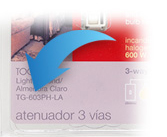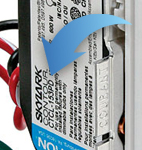
Explore Knowledge Articles
Troubleshooting within Lutron Designer
This article overviews the diagnostics tab within the Lutron Designer software, its features, and what is supported remotely.
Before We Begin
The diagnostics tab within Designer varies depending on whether you are working on a RadioRA 3 system or a HomeWorks QSX system. These options are relative to the types of devices in each system. For example, RA 3 does not have wired QS devices. QSX does.
Below are screenshots from Designer with a Ra3 system (left), and a QSX system (right) for comparison.
RA 3 Diagnostics vs QSX Diagnostics
If you are missing any of the options in the Diagnostics Tab, ensure you are running the latest version of the Lutron Designer software.
Some common terminology used in this article:
Load - The light, motor, or device being controlled.
Control - The device doing the controlling (such as dimmers, switches, etc.).
Event - What the system uses to log something that happened (such as a button press, timeclocks, etc.).
Links - While not used often in RadioRA, this is what the devices are separated into.
As an example, a RadioRA processor and a HomeWorks processor have a maximum of two links:
-
- RadioRA always uses a Clear Connect Type-A and a Clear Connect Type-X link
- Homeworks can be configured to QS, Clear Connect Type-A, or Clear Connect Type-X
Verify Loads
Verify Loads helps confirm that the controls can control their loads properly on the Clear Connect Type-A and QS link. This must be done on-site.
The red section allows you to Flash the load and identify where the load is physically located.
- For dimmers, the Go To Level command can be used to specify a certain percentage for that light to go to.
The blue section displays any error messages regarding the device or load.
- For example, if an RRD-PRO dimmer were flashing the bottom 3 Indicator Lights and refusing to control the load, this section will show that it is either overloaded or detecting a short.
- This is useful for identifying blink codes on devices without needing to load their Installation Guides.
Note: Clear Connect Type-X devices can be tested by following the steps in the Verify Wireless Devices and CCX Dual-Radio Devices section in this article.
Verify QS Devices (QSX)
The Verify QS Devices allows you to see the status of all the devices wired to your QS link, as well as what firmware they are running.
Note: verifying QS devices can be done remotely.
The red section shows the Area tree. Any processors with a QS link will appear here with the QS link status.
- The
(triangle in a circle) icon indicates that the link has not been refreshed, or a device is not in a "Connected" status.
The blue section displays the filters and a key to the status of each device.
- Referencing the screenshot above, any devices reported as Connected disappear from the list.
- Hovering over
(the Information icon) displays a brief description of each status.
The orange section displays each device's name, serial number, location within the project, device type, firmware version, device status, and applicable actions.
- Upon viewing the link the system will refresh the status of the devices, but you may manually refresh the link at the bottom right corner of the screen.
- The action column will change depending on the device's status with potential fixes. As an example, in the screenshot above the device has not been activated, so there is a link to the activation tab in the action column.
- If the system sees a device on the link that does not match any devices in the database, it will display with the Not in Database error. This could happen if you have a device connected to the link but not assigned or not yet added to the design.
- If a firmware upgrade shows as available, you can update the device by going to Tools > Upgrade QS Devices
Verify Wireless Devices (RA 3) and CCX/Dual-Radio Devices (QSX)
Verify Wireless Devices displays what devices are currently communicating with the Processor and prompts if any devices are not activated or require Firmware upgrades.
Note: This can be done remotely.
Unlike the Verify QS Devices, you must refresh this page when visiting it to get the most up-to-date information. Below is a breakdown of what you'll see:
The red section shows the Area tree. Any Processors or (for QSX) Gateways that have a Clear Connect Type-A or Clear Connect Type-X link are displayed here.
- The
icon that appears here means that the link has not been refreshed, or a device is not reporting a "Connected" status.
The blue section displays the filters and a key to the status of each device.
- Referencing the screenshot above, any devices reported as "Connected" disappear from the list.
- Hovering over
(the Information icon) displays a brief description of each status.
The orange section displays each device's serial numbers, location, device type, firmware version, device status, and actions for testing.
- Refresh prompts the system to attempt to ping that specific device.
- On/Off prompts the Clear Connect Type-X to toggle the dimmer/switch's load.
- To test a Clear Connect Type-A load, please see the Verify Loads section.
- If a firmware upgrade is available, the statuses below may be displayed:
- To do a firmware upgrade, go to Tools > Upgrade Clear Connect Type X Devices
Note: One-way communication devices such as Pico Remotes and Occupancy/Vacancy sensors will usually default immediately to "Connected" or "Unknown". This is due to their inability to receive commands from the processor.
Verify Sensors (QSX)
This section displays the connection status and current state of RF-based Occupancy sensors. This is useful when troubleshooting sensors that are unexpectedly turning on, or not turning off, as you can see their state in real-time. Verifying sensors can be done remotely.
Similar to previous verification screens, you must select Refresh at the bottom right corner of the screen to get the current information. Do note that there is information here that may change over time, as currently there are sections present that only apply to Athena commercial-based systems.
The red section shows the sensor type.
- This section only displays Clear Connect Type A (CCA) - One Way sensors
The blue section displays the filters and a key to the status of each device.
- Hovering over
(the Information icon) displays a brief description of each status.
The orange section shows the sensor's status.
The cyan section displays what the sensor is reporting (occupied/unoccupied):
System Activity Viewer
The System Activity Viewer is the best tool to identify what events are happening on the system. (Events can be button presses, occupancy changes, timeclocks, etc...) This is helpful when tracking down situations where lights are turning on/off when they are not expected to.
This also aids in verifying a wired QS link's health regarding noise count and seeing if devices are disconnecting from the link. This cannot be done remotely.
The red section displays the selected Activity Period.
- This is the timeframe displayed based on the Processor's timezone.
The blue section shows the available/activated filters.
- General Activity is useful for tracking down what events happened on the system and what may have caused them:
- Button Activity - button presses on keypads heard by the system. These include press, hold, and release.
- Device Activity - events regarding devices (such as locking and unlocking a device)
- HVAC Activity - changes to the HVAC settings (QSX only with Palladiom Thermostat).
- IR Activity - IR (Infrared) events from devices.
- Occupancy Sensor Change - this usually only appears when a sensor is being enabled/disabled.
- Occupancy Group Change - when an area is Occupied or Unoccupied
- Timeclock Change Activity - when Timeclock Events are triggering.
- Preset Event - appears after each button press, timeclock event, or occupancy group change. This shows the programming triggering.
- Wired Link Activity will show any events relating to the Wired Link's health and status. This is useful for tracking down noise or wiring issues:
- Wrong Connection
- Device Connected/Disconnected - when devices are being connected/disconnected from the link.
- Link Communication Health
- Link Noise Indicator - the current amount of noise count on the link detected
- The format of this will display other information as well, but the noise count will be in the NO section as pictured below:
The orange section is where you can refresh the table and enable the new filters selected.
The cyan section displays the system activity
- By default, this is sorted by the date/time starting at the very first events/activities logged. The latest events are at the bottom of the list.
- Click on any of the columns to sort by the column instead
- The Information column displays more information based on the activity. This is useful to see what devices or events are happening.


